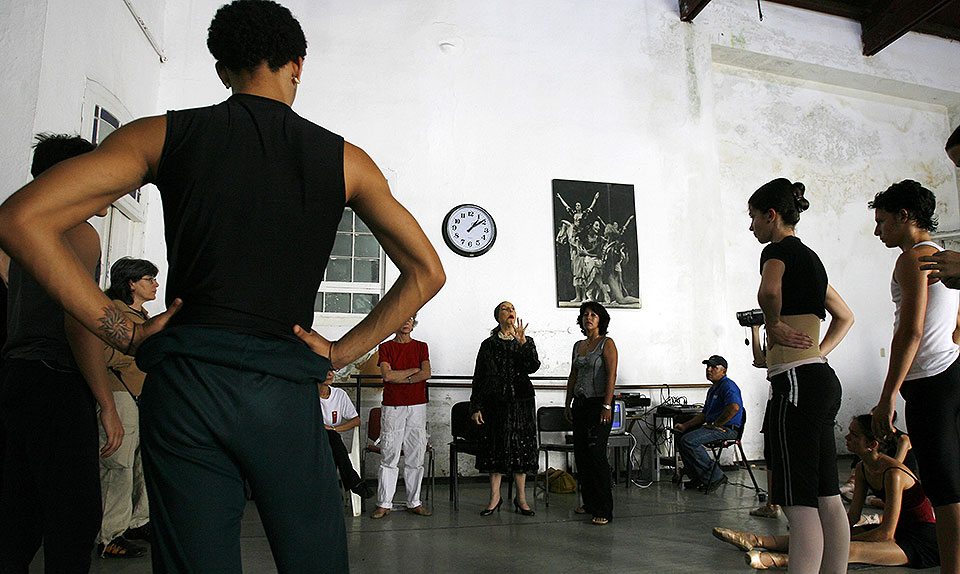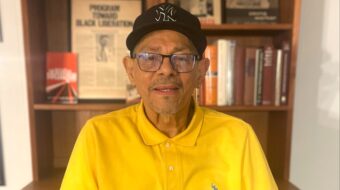
Cuba’s most internationally acclaimed ballerina, Alicia Alonso, passed away Oct. 17 at the age of 98, the National Ballet of Cuba (BNC) announced.
The legendary dancer, founder, and director of the BNC also participated in the founding of the American Ballet Theatre in the early 20th century. In New York in the 1940s and ’50s, Alonso was one of the earliest members of the company that became the ABT, helping it develop into one of the more important ballet troupes in the U.S.
In 1948, she founded her own company in Havana, the Ballet Alicia Alonso. She opened an academy of the same name shortly thereafter. During the rule of the dictator Fulgencio Batista, Alonso issued a public letter in 1956 rejecting any government assistance for her dance school. She ultimately decided not to dance again in Cuba while Batista remained in power and traveled to the United States, where she worked for a time with the Greek Theatre of Los Angeles.
Alonso returned home after the January 1959 triumph of the Cuban Revolution and changed the name of her academy to the National Ballet of Cuba, which received enthusiastic and enduring financial backing from the new government.
She remained a fervent, lifelong supporter of the revolution, reportedly even joining other city-dwelling Cubans for sugarcane harvest campaigns.

Alonso’s talent was legendary, offering technical and interpretative virtuosity in classical works, while her resolve to continue dancing despite her progressive loss of vision and will to remain active on the stage until a very advanced age was widely admired.
The “prima ballerina assoluta” directed the BNC and staged shows until her death, as well as the International Ballet Festival of Havana. “Prima ballerina assoluta” is a title awarded to the most notable of female ballet dancers. To be recognized as a “prima ballerina assoluta” is a rare honor, traditionally reserved only for the most exceptional dancers of their generation.
“Art can contribute to understanding and dialogue between peoples as it shows some of the highest and purest coincidences among all human beings,” Alicia Alonso once told Prensa Latina.
The Cuban ballet school founded by Alicia, Fernando, and Alberto Alonso is unique in the Americas and one of the six recognized in the world. It was distinguished by the Cuban government last year as part of the “Cultural Patrimony of the Nation.”
Alicia served as a model for maestro Fernando when he wrote the methodological bases of the Cuban school and starred in many of Alberto’s choreographies, the first great defender of national identity in the choreographic field.
Alonso was awarded Cuba’s National Dance Prize, Spain’s Gold Medal for Merit in Fine Arts, and the ALBA Prize for the Arts, awarded to recognized personalities of the continent.
In 2000, the Council of State of the Republic of Cuba granted Alonso the highest decoration of the island, the Jose Marti Order and, in 2015, the same body decided to add her name to Havana’s Grand Theater. In the foyer of the Alicia Alonso Grand Theater of Havana stands a bronze statue of the artist dancing her favorite classic, “Giselle.”
In 2003, the then president of France, Jacques Chirac, presented Alicia with the National Order of the Legion of Honour, and in 2017, she was invested as a UNESCO Goodwill Ambassador.
In addition, UNESCO officially created the Alicia Alonso Ibero-American Dance Institute in 2018, attached to the Rey Juan Carlos University in Madrid, Spain.
Since January 2019, she has shared the artistic direction of the BNC with one of her disciples, first dancer Viengsay Valdés. As such, the very school that Alonso founded has contributed to guaranteeing her continuity.
The legendary artist received many more awards throughout her lifetime, including the Star of the Century award from the Latin Institute of Music for having been a true promoter of Latin cadence in classical dance.
However, no award is comparable to the mark she has left as the leading paradigm of dance in Cuba, a legacy that lies with all Cuban ballet dancers today.
“With the death of Cuban dancer and choreographer Alicia Alonso we lose a unique and generous artist,” said Audrey Azoulay, director general of the United Nations Educational, Scientific and Cultural Organization (UNESCO), Paris, France. On Twitter, Azoulay highlighted, in addition to the talent of the prima ballerina assoluta, her contribution to the popularization and preservation of classical ballet. She also recalled that Alonso was appointed a UNESCO Goodwill Ambassador in 2002.
In Buenos Aires, sad and shocked by the death Alicia Alonso, the great Argentine dancer and choreographer Julio Bocca told Prensa Latina he hopes to transmit to the new generations everything he learned from her.
“For the world and Latin American art and dance, something historical was lost,” he said after recalling several beautiful moments with Alonso, whom he was lucky enough to meet, share moments and watch her dance.
Bocca said this news was inevitable, “but when it happens one is not prepared. Now it is up to us the teachers and all those who were able to live with her to transmit that love for the dance she instilled in us, that struggle she gave for Cuban and Latin American dancers.”
The former artistic director of the Sodre National Ballet of Uruguay, who has participated several times in the Havana festivals and taught workshops, sent his respect for all that generation that shared her enormous experience on stage. “My heart is with all of them,” he said.
He also stressed that for the world of dance, art and culture it is a very sad day but, “we must keep going and those memories that are present when transmitting and teaching the history of these great figures.”

Cuban people pay massive tribute to Alicia Alonso
On October 19, the people of Cuba marched and assembled at the Gran Teatro de La Habana Alicia Alonso as a show of respect for the country’s most universal artist.
The spontaneous interest of a people to see the legendary dancer for the last time shows the popularity of a woman who was not satisfied with shining in the great theatres of the world but who took care to spread the dance in all corners of her country, even the most humble.
People of all generations passed in front of her coffin, some leaning out, others simply put one hand on the coffin and with the other tears wipe away, trying not to see her, preferring to remember her vital and energetic, as she was always seen.
“Today is a sad day for the world, but she will always be with us,” says BNC Vice-Artistic Director and lead dancer Viengsay Valdés. She says it and the crying continues.
This article features material from Prensa Latina, Granma, and the Associated Press.










